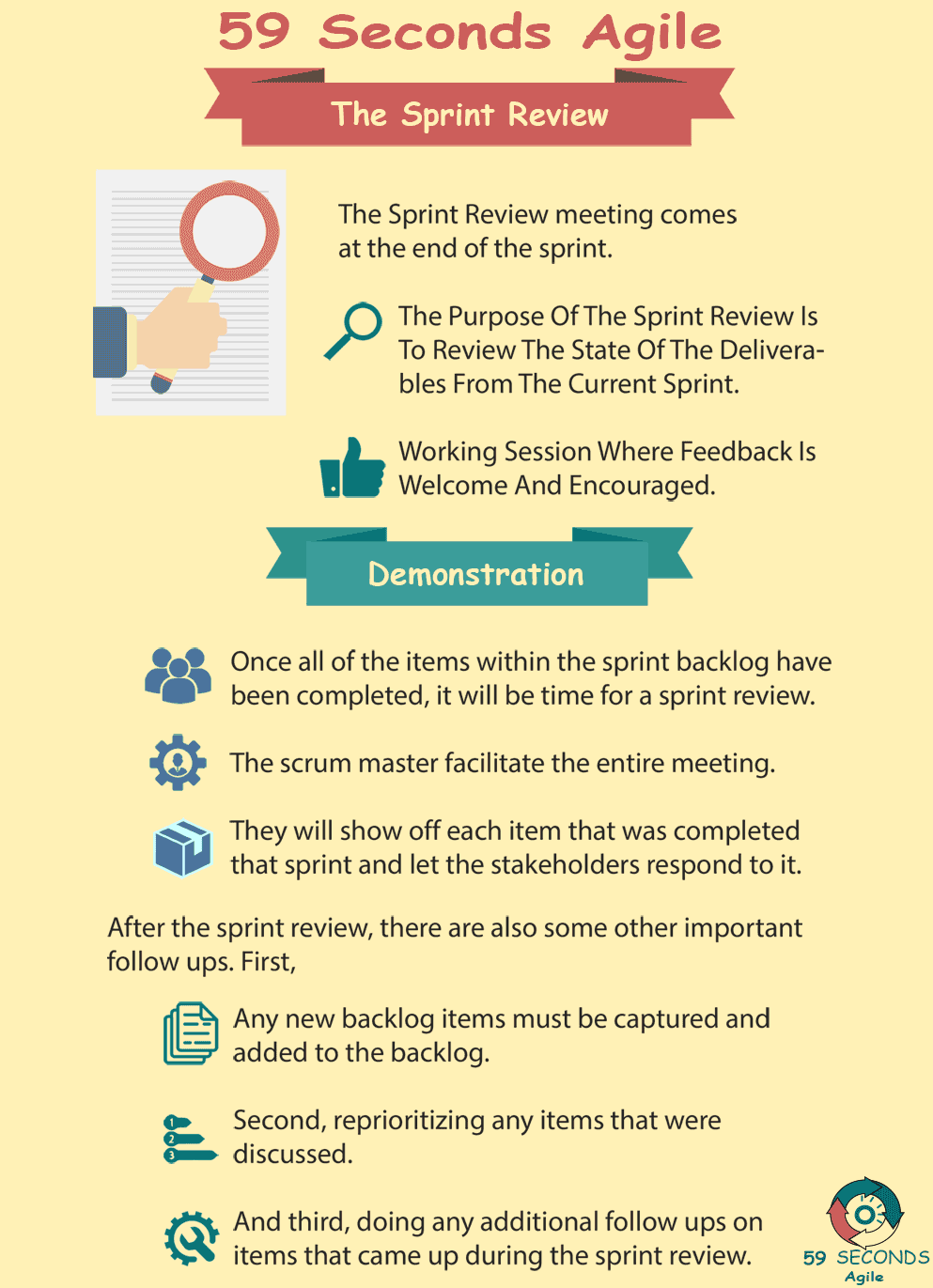This article looks to discuss the Scrum Sprint Review and the Scrum Sprint retrospective. The processes involved in these ceremonies will be discussed along with the advantages and disadvantages of the meetings.
Scrum Sprint Retrospective and Review
A 59 Seconds Agile Training Video
Continue to Part 3 Below
Scrum Sprint Retrospective and Review
A 59 Seconds Agile Article
This article provides an ‘Introduction the Agile Sprint Review and Retrospective’ and looks to discuss what is involved within these meetings. It provides an insight into is the point of the Agile ceremonies and what is involved in them.
Scrum Sprint Review and The Scrum Sprint Retrospective
The thing that will help your team take back ownership of their work is having a set of values and principles that allow them to make changes to the way that they work.
In the traditional lessons learned style of self-review, the only opportunity for reflection comes at the end of the development process, when there’s no chance to apply the information you’ve gathered to the current product. According to the agile values and principles, every aspect of the development process is inspected throughout the entire life cycle of the product, rather than only at the end.
There are two main ceremonies that facilitate this reflection: the sprint review and the sprint retrospective.
Sprint Review Meeting
The Sprint Review meeting is held after your team has finished all of the deliverables they committed to for the current sprint. It’s attended by the product owner, the development team, the scrum master, and the stakeholders. All the major players in the product’s development are together in one room, for the sole purpose of making sure that the product is generating as much value as possible.
Part of this reflection takes the form of a demonstration of the features built by the development team, and the subsequent approval by the product owner and the stakeholders. The product owner’s responsibility at this point is to ensure that the features align with the product vision, and that they’ve been tested and work how they should. This is the last chance to inspect and adapt the product before it is released to the customers.
The stakeholders attend this meeting, they are the ones who can let the team know what features are going to add value to the product. The development team is helping meet the objective to maximize the return on investment of the features for the product. Remember, inspect and adapt to increase present and future value and satisfaction. The team will come out of the sprint review meeting with an updated product backlog, and a set of completed and approved features.
Continue Reading —> Next
Sprint Review Meeting
A 59 Seconds Agile Video Animation
Continue Reading —> Next
User Stories Applied
A 59 Seconds Agile Book Review
User Stories Applied by Mike Cohn is one of our favourite books on Agile User Stories. The book starts with an overview into user stories, and details what a user story is and the different aspects of them. He then discusses how to go about writing a user story, and provides details of the INVEST criteria that can be used to determine if the story is meeting all of its objectives. Next Mike gives an in depth discussion of who user stories are written for and where to begin when gathering the details for them. The book then discusses acceptance testing user stories, including how to go about specifying these criteria and the responsibilities of the development team and customers during this process.
Continue Reading —> Next
Agile Sprint Review and Retrospective
A 59 Seconds Agile Infographic

Continue Reading —> Next
Agile Scrum Master Training Course
Our Favourite Agile Books
We found these books great for finding out more information on Agile Scrum:
Continue Reading —> Next


